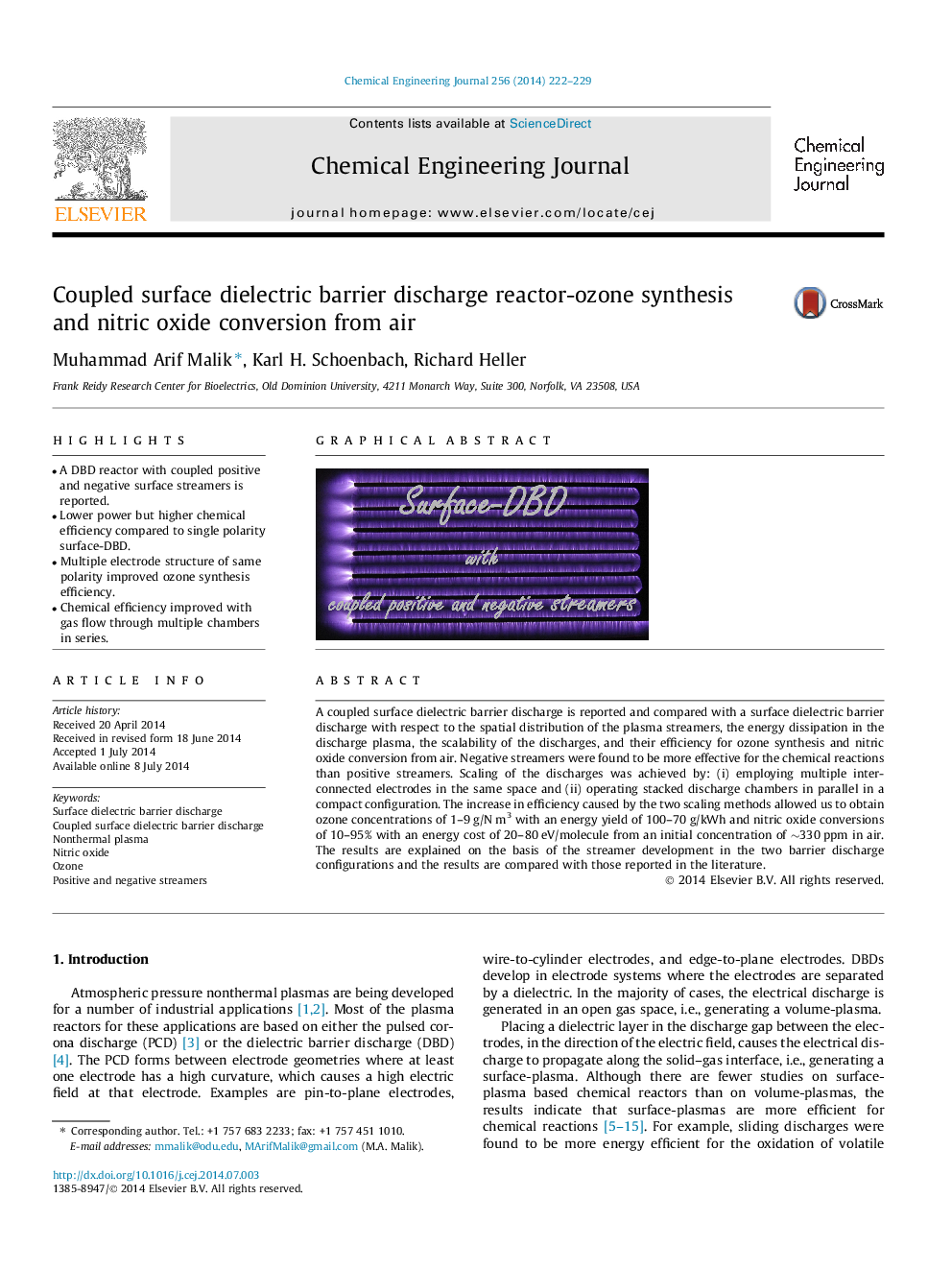| Article ID | Journal | Published Year | Pages | File Type |
|---|---|---|---|---|
| 147004 | Chemical Engineering Journal | 2014 | 8 Pages |
•A DBD reactor with coupled positive and negative surface streamers is reported.•Lower power but higher chemical efficiency compared to single polarity surface-DBD.•Multiple electrode structure of same polarity improved ozone synthesis efficiency.•Chemical efficiency improved with gas flow through multiple chambers in series.
A coupled surface dielectric barrier discharge is reported and compared with a surface dielectric barrier discharge with respect to the spatial distribution of the plasma streamers, the energy dissipation in the discharge plasma, the scalability of the discharges, and their efficiency for ozone synthesis and nitric oxide conversion from air. Negative streamers were found to be more effective for the chemical reactions than positive streamers. Scaling of the discharges was achieved by: (i) employing multiple inter-connected electrodes in the same space and (ii) operating stacked discharge chambers in parallel in a compact configuration. The increase in efficiency caused by the two scaling methods allowed us to obtain ozone concentrations of 1–9 g/N m3 with an energy yield of 100–70 g/kWh and nitric oxide conversions of 10–95% with an energy cost of 20–80 eV/molecule from an initial concentration of ∼330 ppm in air. The results are explained on the basis of the streamer development in the two barrier discharge configurations and the results are compared with those reported in the literature.
Graphical abstractFigure optionsDownload full-size imageDownload as PowerPoint slide
